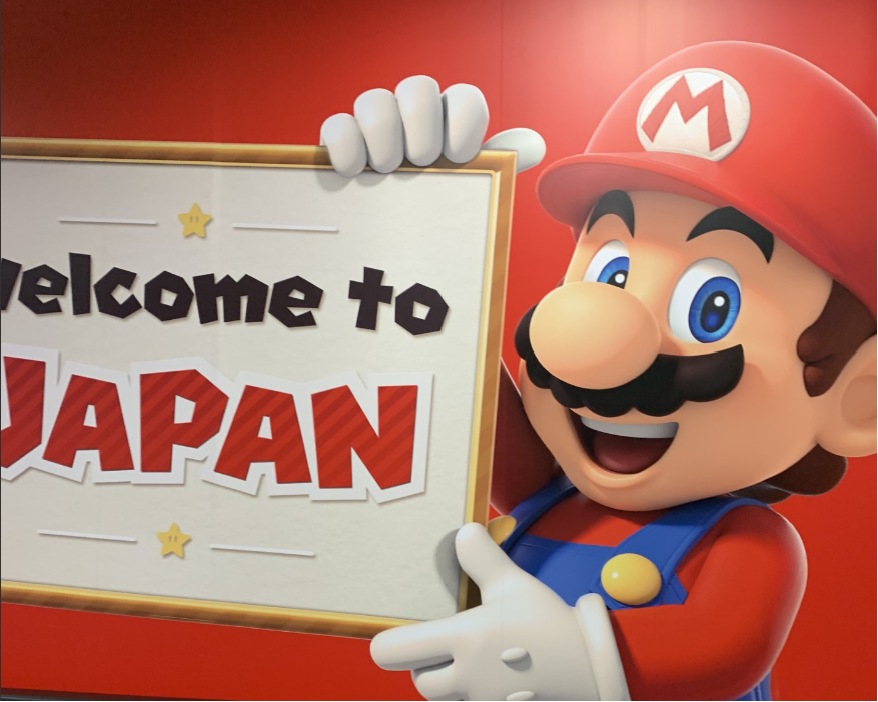
24 years ago this summer – August 8th to be exact, I moved to Japan to begin my teaching career. I had a textbook of beginner Japanese and an English guidebook, but it was the experience of actually being emersed in a new culture and language, and the trial by error episodes that made it one of the most meaningful and effective learning adventures I have had so far. Would someone moving to Japan today be fortunate enough to have the same experience? I’m not sure.
The school I worked for was in a city called Sugita, in Yokohama. As soon as I arrived, the Japanese English teachers began teaching me some of the language, and I taught them some English in a kind of lesson exchange. In the beginning I relied on them to translate and help me get many things set up. I am still very close with the teachers I met at that school and see them each time I return to the area.

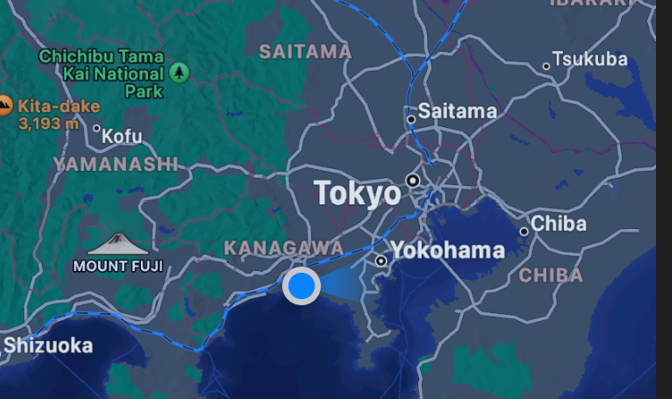

These days I still study Japanese on Duolingo and the gamification of it is fun and the AI reviews my mistakes and is a pretty good guide. But, when I think back to the beginning of my learning, I remember the friendships I made and all the laughing and fun we had – and for me, that’s what made it a great learning experience.
Speaking of apps, a translation app would have been very useful in my early days in Japan. Back then, few signs included any English. I mostly went by infographics and then slowly I learned to read some of the characters. In the first image below, you can see that newer signs have some translation now, in more than one language. After a year in Japan, I would have been able to recognize the character for water, and then the hiragana for ‘you can’, so I would have been able to understand without translation, and I would have felt proud of myself… also proud that I figured out how to use the translation app – second image, but it was not quite the same ‘Aha!’ moment I remember having when I realized I could actually read some Japanese.
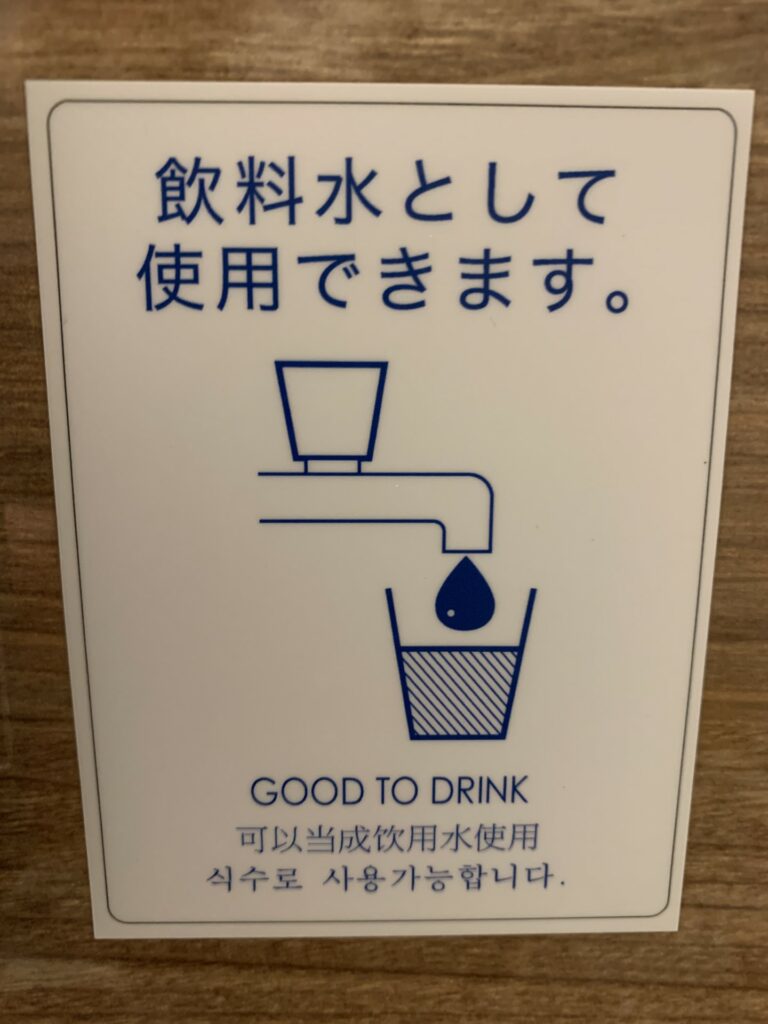
Image taken by me
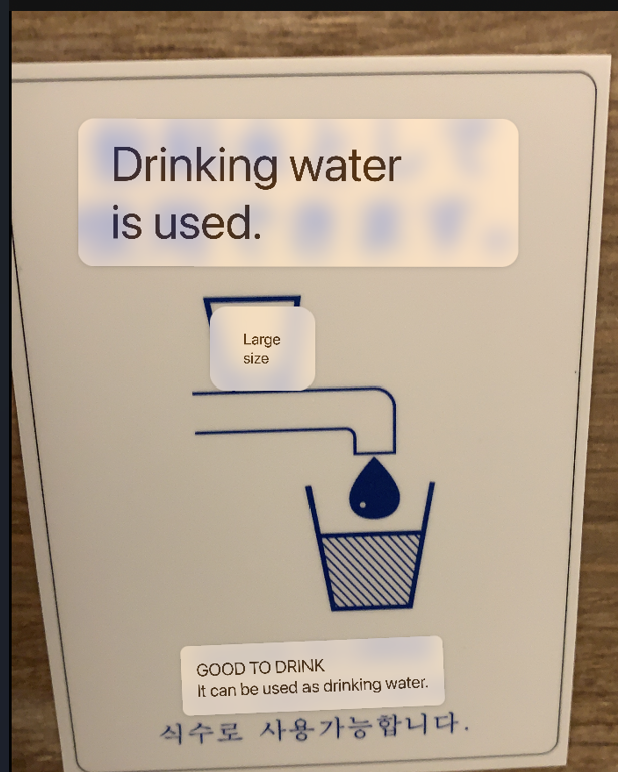
Image taken by me
The next image below is of a large multilingual interactive map located in a train station – wow that would have been great. It translates not only to English, but Korean, and Mandarin as well. But then I wouldn’t have had to ask someone for help – in Japanese. And I may not have gotten lost and had to ask a few more times – speaking and comprehending at their finest. This interactive map is easy and convenient, but what language skills are practiced?
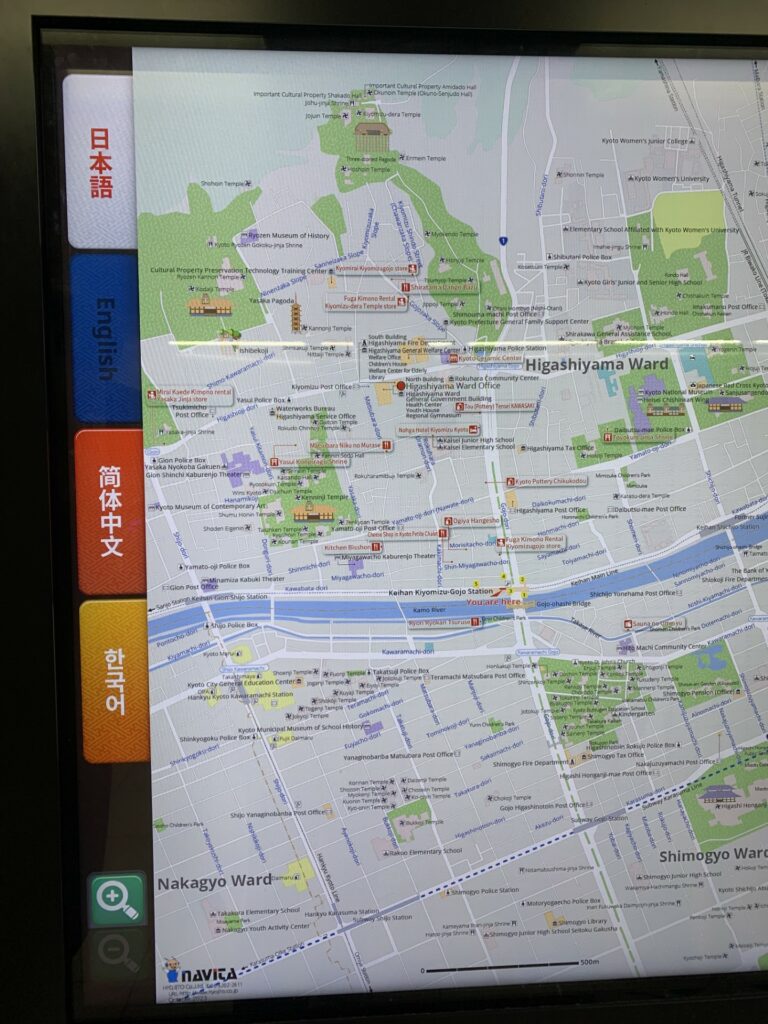
Perhaps one of the biggest differences I notice now in Japan is the use of tablet devices to check in and then order in many restaurants. Very clever for the shop and useful for foreigners to navigate, but where is the language practice? One can easily switch from the Japanese menu display to an English one, click a few tasty looking pictures and send the order to the kitchen – no need for any interaction with staff until the meal items arrive. Then a quick ‘arigato’ and you’re all set. Very useful and easy, heaven for an introvert like myself, but where is the language learning? I guess you do have to be able to recognize how to change the menu to English…. But no need for the cultural call for a waiter or waitress, ‘sumimasen!’ – something I needed to practice many times to perfect. What about trying to read the characters and then order and see if they can understand, albeit pointing at a picture (they always have had good pictures or plastic food displays) to fall back on if pronunciation fails? The feeling of success when they understand? Or the feeling of failure when they don’t understand, followed by the promise to practice more, get it right, and not be embarrassed again?
I do love technology, especially when it makes things easier. But I can’t help but think that when it comes to learning another language, lack of human interaction and constant device translation, though convenient, are honing different skills than true language learning.

Recent Comments